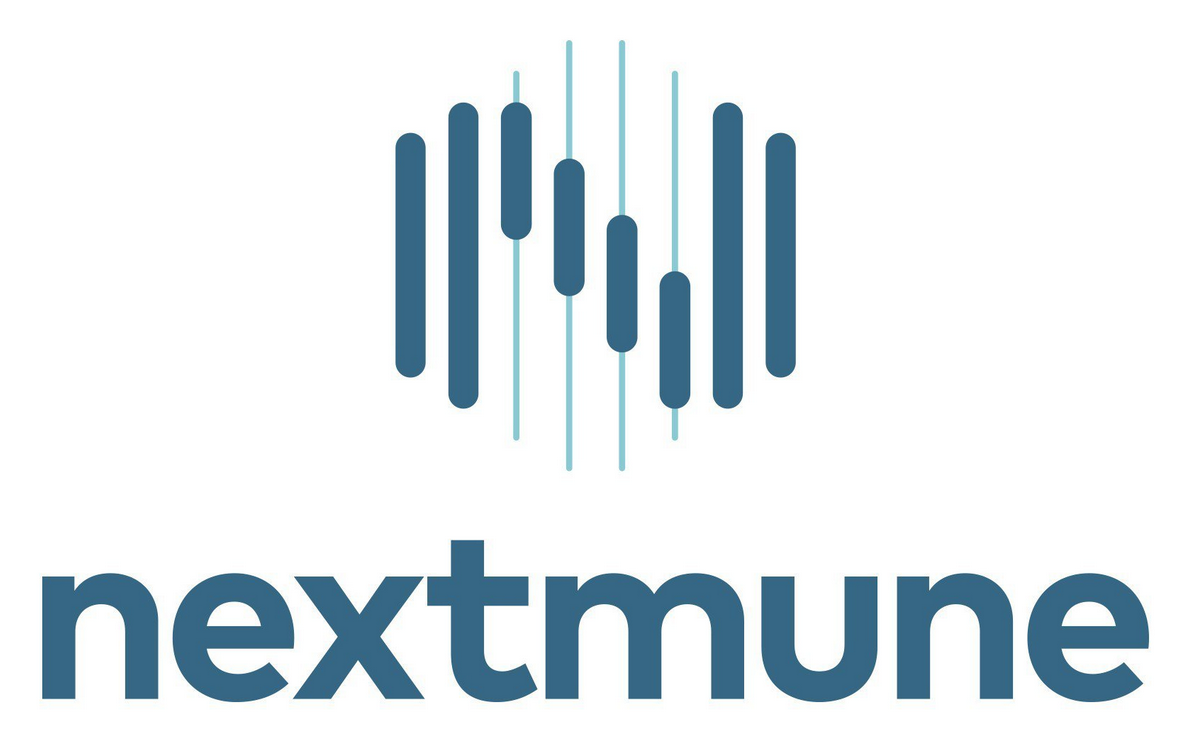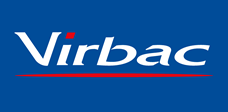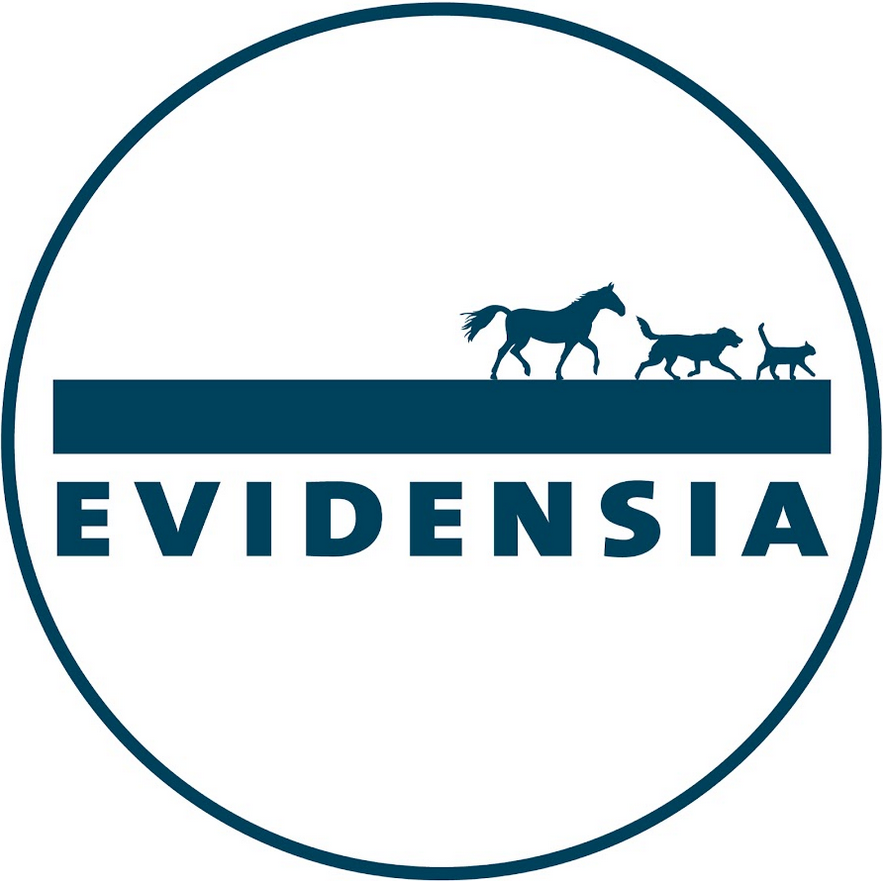Similar packages
Milprazon Chewable (1 - 5 kg)
ATC code
Species
Dogs (small dogs and puppies).
Indications
Treatment of mixed infections by adult cestodes and nematodes of the following species:
- Cestodes:
Dipylidium caninum
Taenia spp.
Echinococcus spp.
Mesocestoides spp.
- Nematodes:
Ancylostoma caninum
Toxocara canis
Toxascaris leonina
Trichuris vulpis
Crenosoma vulpis (Reduction of the level of infection).
Angiostrongylus vasorum (Reduction of the level of infection by immature adult (L5) and adult parasite stages; see specific treatment and disease prevention schedules under section 4.9 Amounts to be administered and administration route).
Thelazia callipaeda (see specific treatment schedule under section 4.9 Amounts to be administered and administration route).
The veterinary medicinal product can also be used in the prevention of heartworm disease (Dirofilaria immitis), if concomitant treatment against cestodes is indicated.
Dose to be administered and administration route
Oral use.
To ensure a correct dosage, body weight should be determined as accurately as possible.
Minimum recommended dose rate: 0.5 mg of milbemycin oxime and 5 mg of praziquantel per kg are given once orally.
The veterinary medicinal product should be administered with or after some food. The veterinary medicinal product is palatable i.e. it is usually taken voluntarily by dogs (voluntary consumption on > 80% of occasions in animals studied). If the dog does not voluntarily accept the tablet, it can also be administered into the mouth.
Depending on the bodyweight of the dog, the practical dosing is as follows:
|
Body weight |
Film-coated tablets |
|
0.5 – 1 kg |
1/2 tablet |
|
>1 – 5 kg |
1 tablet |
|
>5 – 10 kg |
2 tablets |
In cases when heartworm disease prevention is used and at the same time treatment against tapeworm is required, the veterinary medicinal product can replace the monosubstance veterinary medicinal product for the prevention of heartworm disease.
For treatment of Angiostrongylus vasorum infections, milbemycin oxime should be given four times at weekly intervals. It is recommended, where concomitant treatment against cestodes is indicated, to treat once with the veterinary medicinal product and continue with the monovalent veterinary medicinal product containing milbemycin oxime alone, for the remaining three weekly treatments.
In endemic areas administration of the veterinary medicinal product every four weeks will prevent angiostrongylosis by reducing immature adult (L5) and adult parasite burden, where concomitant treatment against cestodes is indicated.
For the treatment of Thelazia callipaeda, milbemycin oxime should be given in 2 treatments, seven days apart. Where concomitant treatment against cestodes is indicated, the veterinary medicinal product can replace the monosubstance veterinary medicinal product containing milbemycin oxime alone.
Adverse reactions
Dogs:
|
Very rare (<1 animal / 10,000 animals treated, including isolated reports): |
Hypersensitivity reaction; Systemic disorders (e.g. lethargy); Neurological disorders (e.g. muscle tremors and ataxia); Digestive tract disorders (e.g. emesis, diarrhoea, anorexia and drooling). |
Reporting adverse events is important. It allows continuous safety monitoring of a veterinary medicinal product. Reports should be sent, preferably via a veterinarian, to either the marketing authorisation holder or its local representative or the national competent authority via the national reporting system. See also section 16 of the package leaflet for contact details.
Dispensing
POM-V - Prescription Only Medicine – VeterinarianReferences
SUMMARY OF PRODUCT CHARACTERISTICS
1. NAME OF THE VETERINARY MEDICINAL PRODUCT
Milprazon Chewable 2.5 mg/25 mg Film-coated Tablets for Small Dogs and Puppies Weighing at Least 0.5 kg
2. QUALITATIVE AND QUANTITATIVE COMPOSITION
Each film-coated tablet contains:
Active substances:
Milbemycin oxime 2.5 mg Praziquantel 25.0 mg
Excipients:
For the full list of excipients, see section 6.1.
3. PHARMACEUTICAL FORM
Film-coated tablet.
Pale yellowish brown, oval, biconvex, mottled, film coated tablets, scored on one side.
The tablets can be divided into equal halves.
4. CLINICAL PARTICULARS
4.1 Target Species
Dogs (small dogs and puppies).
4.2 Indications for use, specifying the target species
Treatment of mixed infections by adult cestodes and nematodes of the following species:
- Cestodes: Dipylidium caninum Taenia spp.
Echinococcus spp.
Mesocestoides spp.
- Nematodes:
Ancylostoma caninum
Toxocara canis
Toxascaris leonina
Trichuris vulpis
Crenosoma vulpis (Reduction of the level of infection)
Angiostrongylus vasorum (Reduction of the level of infection by immature adult (L5) and adult parasite stages; see specific treatment and disease prevention schedules under section 4.9 Amounts to be administered and administration route).
Thelazia callipaeda (see specific treatment schedule under section 4.9 Amounts to be administered and administration route).
The product can also be used in the prevention of heartworm disease (Dirofilaria immitis), if concomitant treatment against cestodes is indicated.
4.3 Contraindications
Do not use in puppies of less than 2 weeks of age and/or weighing less than 0.5 kg. Do not use in cases of hypersensitivity to the active substances or to any of the excipients.
See also section 4.5 Special precautions for use.
4.4 Special warnings for each target species
Parasite resistance to any particular class of anthelmintic may develop following frequent, repeated use of an anthelmintic of that class.
It is recommended to treat all the animals in the same household concomitantly. In order to develop an effective worm control programme local epidemiological information and the risk of exposure of the dog should be taken into account, and it is recommended to seek professional (e. g. veterinary) advice.
When D. caninum infection is present, concomitant treatment against intermediate hosts, such as fleas and lice, should be considered to prevent re-infection.
4.5 Special precautions for use
Special precautions for use in animals
Studies with milbemycin oxime indicate that the margin of safety in certain dogs of Collie or related breeds is less than in other breeds. In these dogs, the recommended dose should be strictly observed.
The tolerance of the product in young puppies from these breeds has not been investigated.
Clinical signs in Collies are similar to those seen in the general dog population when overdosed.
Treatment of dogs with a high number of circulating microfilariae can sometimes lead to the appearance of hypersensitivity reactions, such as pale mucous membranes, vomiting, trembling, laboured breathing or excessive salivation. These reactions are associated with the release of proteins from dead or dying microfilariae and are not a direct toxic effect of the product. The use in dogs suffering from microfilaremia is thus not recommended.
In heartworm risk-areas, or in the case it is known that a dog has been travelling to and from heartworm risk regions, before using the product, a veterinary consultation is advised to exclude the presence of any concurrent infestation of Dirofilaria immitis. In the case of a positive diagnosis, adulticidal therapy is indicated before administering the product.
No studies have been performed with severely debilitated dogs or individuals with seriously compromised kidney or liver function. The product is not recommended for such animals or only according to a benefit/risk assessment by the responsible veterinarian.
In dogs less than 4 weeks old, tape worm infection is unusual. Treatment of animals less than 4 weeks old with a combination product may therefore not be necessary.
As the tablets are flavoured, they should be stored in a safe place out of the reach of animals.
Special precautions to be taken by the person administering the veterinary medicinal product to animals
Accidental ingestion of a tablet by a child may be harmful. In order to prevent children from accessing the product, tablets should be administered and stored out of sight and reach of children.
Part tablets should be returned to the open blister pocket and inserted into the outer carton.
In the event of accidental ingestion of one or more tablets, seek medical advice immediately and show the package leaflet or the label to the doctor.Wash hands after use.
Other precautions
Echinococcosis represents a hazard for humans. As Echinococcosis is a notifiable disease to the World Organisation for Animal Health (OIE), specific guidelines on the treatment and follow-up, and on the safeguard of persons, need to be obtained from the relevant competent authority (e. g. experts or institutes of parasitology).
4.6 Adverse reactions (frequency and seriousness)
On very rare occasions, systemic signs (such as lethargy), neurological signs (such as muscle tremors and ataxia) and/or gastrointestinal signs (such as emesis, diarrhoea, anorexia and drooling) have been observed in dogs after administration of the combination of milbemycin oxime and praziquantel.
On very rare occasions hypersensitivity reactions have been observed following administration of the product.
The frequency of adverse reactions is defined using the following convention:
- very common (more than 1 in 10 animals treated displaying adverse reaction(s))
- common (more than 1 but less than 10 animals in 100 animals treated)
- uncommon (more than 1 but less than 10 animals in 1,000 animals treated)
- rare (more than 1 but less than 10 animals in 10,000 animals treated)
- very rare (less than 1 animal in 10,000 animals treated, including isolated reports).
4.7 Use during pregnancy and lactation
The product may be used in breeding dogs including pregnant and lactating bitches.
4.8 Interaction with other medicinal products and other forms of interaction
No interactions were observed when the recommended dose of the macrocyclic lactone selamectin was administered during treatment with the combination of milbemycin oxime and praziquantel at the recommended dose. In the absence of further studies, caution should be taken in the case of concurrent use of the product and other macrocyclic lactones. Also, no such studies have been performed with reproducing animals.
4.9 Amounts to be administered and administration route
Oral use.
Dogs should be weighed to ensure accurate dosing.
Minimum recommended dose rate: 0.5 mg of milbemycin oxime and 5 mg of praziquantel per kg are given once orally.
The product should be administered with or after some food. The product is palatable i.e. it is usually taken voluntarily by dogs (voluntary consumption on > 80% of occasions in animals studied). If the dog does not voluntarily accept the tablet, it can also be administered into the mouth.
Depending on the bodyweight of the dog, the practical dosing is as follows:
|
Body weight |
Film-coated tablets |
|
0.5 – 1 kg |
1/2 tablet |
|
>1 – 5 kg |
1 tablet |
|
>5 – 10 kg |
2 tablets |
In cases when heartworm disease prevention is used and at the same time treatment against tapeworm is required, the product can replace the monosubstance product for the prevention of heartworm disease.
For treatment of Angiostrongylus vasorum infections, milbemycin oxime should be given four times at weekly intervals. It is recommended, where concomitant treatment against cestodes is indicated, to treat once with the product and continue with the monovalent product containing milbemycin oxime alone, for the remaining three weekly treatments.
In endemic areas administration of the product every four weeks will prevent angiostrongylosis by reducing immature adult (L5) and adult parasite burden, where concomitant treatment against cestodes is indicated.
For the treatment of Thelazia callipaeda, milbemycin oxime should be given in 2 treatments, seven days apart. Where concomitant treatment against cestodes is indicated, the product can replace the monosubstance product containing milbemycin oxime alone.
4.10 Overdose (symptoms, emergency procedures, antidotes), if necessary
No other signs than those observed at the recommended dose have been observed (see 4.6).
4.11 Withdrawal period(s) Not applicable.
5. PHARMACOLOGICAL PROPERTIES
Pharmacotherapeutic group: Endectocides, Macrocyclic lactones, milbemycin, combinations
ATCvet code: QP54AB51
5.1 Pharmacodynamic properties
Milbemycin oxime belongs to the group of macrocyclic lactones, isolated from the fermentation of Streptomyces hygroscopicus var. aureolacrimosus. It is active against mites, against larval and adult stages of nematodes as well as against larvae of Dirofilaria immitis.
The activity of milbemycin is related to its action on invertebrate neurotransmission: Milbemycin oxime, like avermectins and other milbemycins, increases nematode and insect membrane permeability to chloride ions via glutamate-gated chloride ion channels (related to vertebrate GABAA and glycine receptors). This leads to hyperpolarisation of the neuromuscular membrane and flaccid paralysis and death of the parasite.
Praziquantel is an acylated pyrazino-isoquinoline derivative. Praziquantel is active against cestodes and trematodes. It modifies the permeability for calcium (influx of Ca2+) in the membranes of the parasite inducing an imbalance in the membrane structures, leading to membrane depolarisation and almost instantaneous contraction of the musculature (tetany), rapid vacuolization of the syncytial tegument and subsequent tegumental disintegration (blebbing), resulting in easier expulsion from the gastrointestinal tract or death of the parasite.
5.2 Pharmacokinetic particulars
After oral administration of praziquantel in the dog, after a small amount of food, peak serum levels of parent are rapidly attained (Tmax approximately 0.25-2.5 hours) and decline quickly (t1/2 approximately 1 hour); there is a substantial hepatic first-pass effect, with very rapid and almost complete hepatic biotransformation, principally to monohydroxylated (also some di- and tri-hydroxylated) derivatives, which are mostly glucuronide and/or sulfate conjugated before excretion. Plasma binding is about 80%. Excretion is fast and complete (about 90% in 2 days); the principal route of elimination is renal.
After oral administration of milbemycin oxime in dogs, after a small amount of food, peak plasma levels occur at about 0.75-3.5 hours, and decline with a half-life of the unmetabolised milbemycin oxime of 1-4 days. Bioavailability is about 80%.
6. PHARMACEUTICAL PARTICULARS
6.1 List of excipients
Cellulose, microcrystalline
Lactose monohydrate
Povidone
Croscarmellose sodium
Silica, colloidal anhydrous
Meat Flavour
Yeast powder
Magnesium stearate
Hypromellose
Talc
Propylene Glycol
Liver Flavour
6.2 Major incompatibilities
Not applicable.
6.3 Shelf life
Shelf life of the veterinary medicinal product as packaged for sale: 3 years
Shelf life for halved tablets after first opening the immediate packaging: 6 months.
6.4 Special precautions for storage
Store in the original package in order to protect from moisture. This veterinary medicinal product does not require any special temperature storage conditions. Halved tablets should be stored below 25°C in the original blister and be used for the next administration.
6.5 Nature and composition of immediate packaging
Blister packs consisting of cold formed aluminium foil which consists of aluminum layer coated with OPA (Oriented Polyamide) film on one side and PVC on the other side and an aluminum sealing foil.
Package sizes:
Cardboard box with 1 blister of 2 tablets.
Cardboard box with 1 blister of 4 tablets.
Cardboard box with 12 blisters, each blister contains 4 tablets (total 48 tablets).
Not all pack sizes may be marketed.
6.6 Special precautions for the disposal of unused veterinary medicinal product or waste materials derived from the use of such products
Any unused veterinary medicinal product or waste materials derived from such veterinary medicinal product should be disposed of in accordance with local requirements.
The product should not enter water courses as this may be dangerous for fish and other aquatic organisms.
7. MARKETING AUTHORISATION HOLDER
KRKA d.d., Novo mesto
Šmarješka cesta 6
8501 Novo mesto
Slovenia
8. MARKETING AUTHORISATION NUMBER
Vm 01656/4191
9. DATE OF FIRST AUTHORISATION
10 September 2021
10. DATE OF REVISION OF THE TEXT
September 2021

Approved: 10 September 2021

 TRUSTED SOURCE
TRUSTED SOURCE








